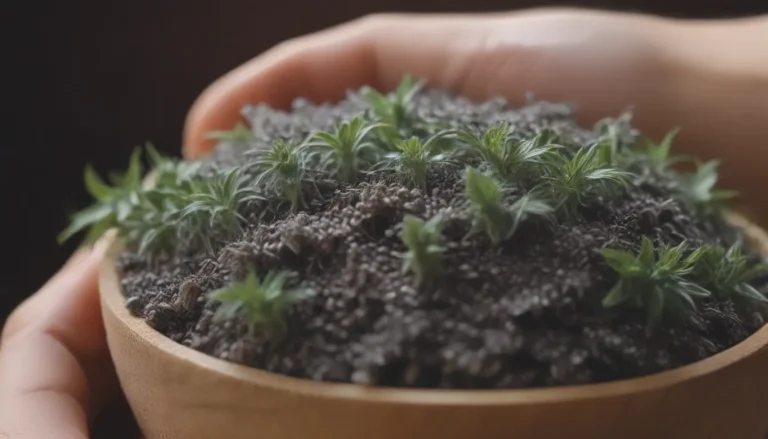The Ultimate Guide to Growing and Caring for Sweet Alyssum

Welcome to the ultimate guide on how to grow and care for sweet alyssum! This charming plant makes a colorful carpet of tiny flowers that can brighten up your garden or landscape. Whether you’re a seasoned gardener or just starting out, sweet alyssum is an excellent choice for adding beauty and fragrance to your outdoor space.
Why Choose Sweet Alyssum?
Sweet alyssum, native to Europe, is a low-growing plant with gray-green leaves and delicate, four-petal flowers. Here are a few reasons why you should consider adding sweet alyssum to your garden:
- Easy to grow: Whether you start from plant or seed, sweet alyssum is a breeze to cultivate.
- Cool-season flower: Plant in early spring for a burst of color or in fall and winter in frost-free climates.
- Fragrant blooms: The flowers emit a sweet, honey-like fragrance that attracts pollinators.
- Versatile: Use sweet alyssum as a ground cover, edging plant, or spill over in containers.
Sweet Alyssum Care Tips
Taking care of sweet alyssum is a simple and rewarding task. Here are some essential care tips to keep your plants happy and thriving:
Light
Sweet alyssum thrives in full sun but appreciates some shade during hot, dry periods. Aim for 6 to 8 hours of sunlight a day for optimal growth.
Soil
Plant sweet alyssum in moist, well-draining soil. It can tolerate various planting locations, including sandy beaches, dunes, slopes, and cracks in sidewalks. Avoid boggy soil or areas with poor drainage.
Water
Water your sweet alyssum plants regularly, providing at least an inch of water per week. Increase watering during hot weather or dry spells, ensuring the soil drains well to prevent waterlogging.
Temperature and Humidity
Sweet alyssum thrives in temperate weather but may pause flowering during extreme heat. In high humidity, reduce watering to prevent issues. The plants may stop blooming in heat but will resume in the fall.
Fertilizer
In-ground plants typically do not need fertilizer unless the soil is poor. Container-grown plants benefit from monthly feedings with a water-soluble, balanced fertilizer. Avoid over-fertilizing to prevent lush foliage and reduced blooming.
Types of Sweet Alyssum
There are several common varieties of sweet alyssum to choose from, each offering unique characteristics and colors:
- Easter Bonnet
- New Carpet of Snow
- Pastel Carpet
- Snow Crystals
- Snow Princess
Pruning and Propagating Sweet Alyssum
Prune your sweet alyssum plants to encourage continuous blooming and maintain a neat appearance. Deadheading spent flowers or shearing plants can help stimulate new growth. Propagate sweet alyssum from seed, starting indoors before the last frost or directly sowing in the garden once the soil is workable.
How to Grow Sweet Alyssum From Seed
Starting sweet alyssum from seed is a straightforward process. Scatter the seeds on top of the soil, lightly press them down, and keep the soil moist until germination. Water whenever the soil feels dry to ensure successful growth.
Potting and Overwintering Sweet Alyssum
Sweet alyssum grows well in containers, making it a perfect choice for hanging baskets or window boxes. Use high-quality potting soil with good drainage and repot as needed to accommodate growth. In colder climates, overwinter sweet alyssum by cutting down the plants, covering them, or bringing containers indoors to protect them from frost.
Common Pests and Diseases
While sweet alyssum is generally problem-free, it may attract aphids when under stress. Watch out for downy mildew, stem and crown rot, and general decline due to poor drainage. Prevent overwatering to keep your plants healthy and vibrant.
Troubleshooting Common Problems
If you encounter issues with your sweet alyssum plants, such as wilting, curling leaves, or yellowing foliage, take action to identify and address the underlying causes. Ensure proper drainage, watering, and care to prevent problems and keep your plants thriving.
Conclusion
In conclusion, sweet alyssum is a delightful and versatile plant that’s easy to grow and care for in a variety of settings. Whether you’re looking to add color to your garden, attract pollinators, or fill in bare patches, sweet alyssum is an excellent choice for both beginner and experienced gardeners. Follow the tips and guidelines outlined in this guide to ensure your sweet alyssum plants flourish and bring joy to your outdoor space. Happy gardening!





